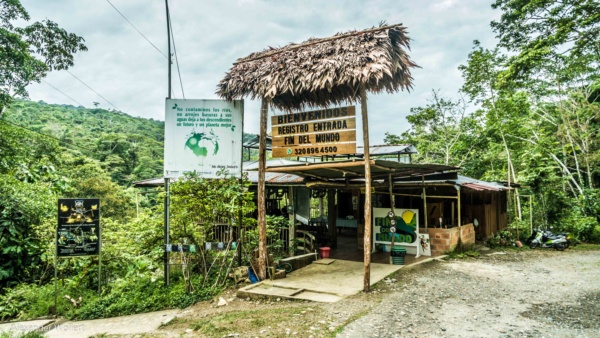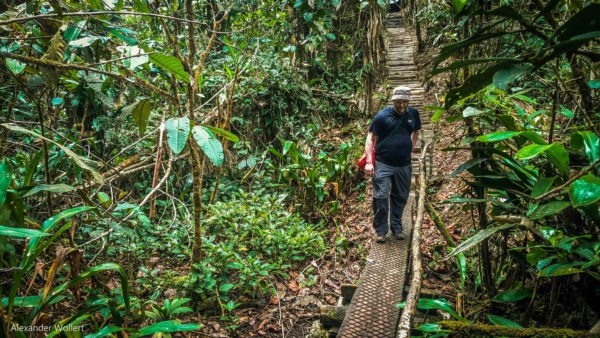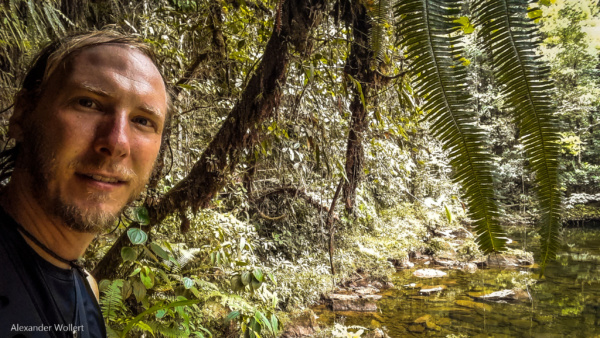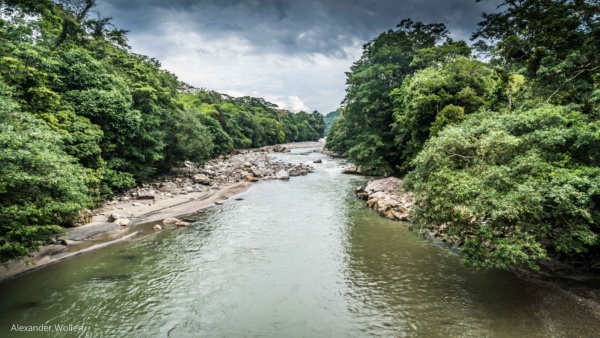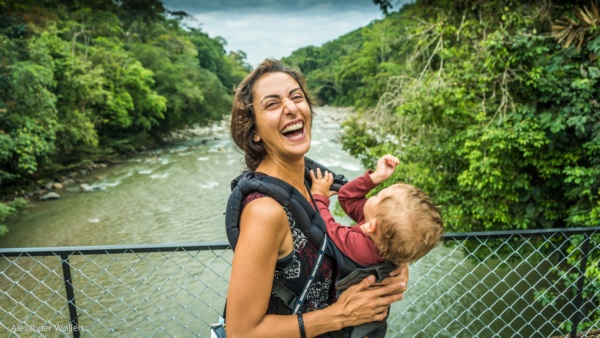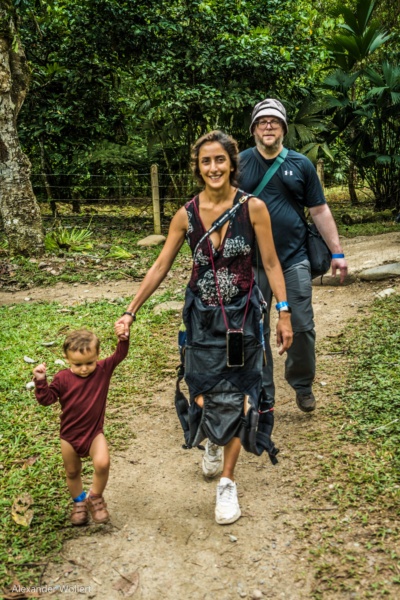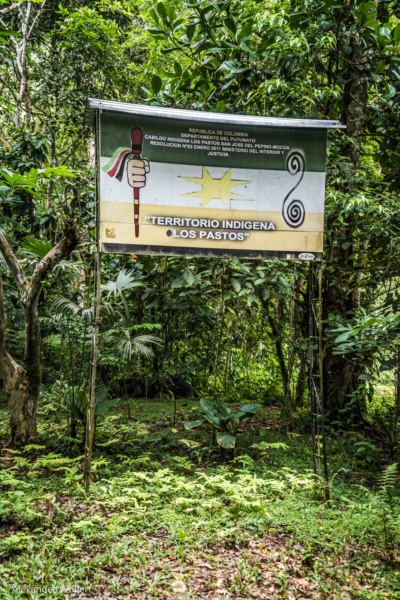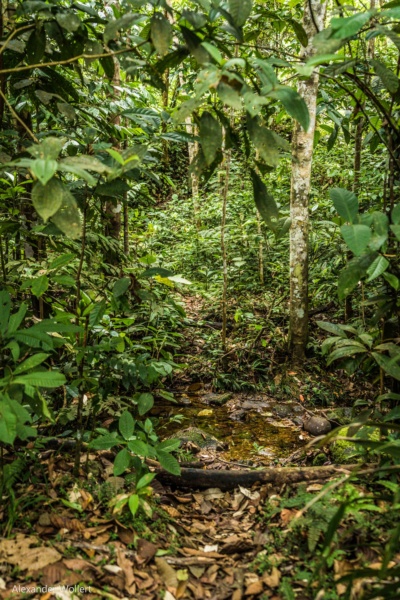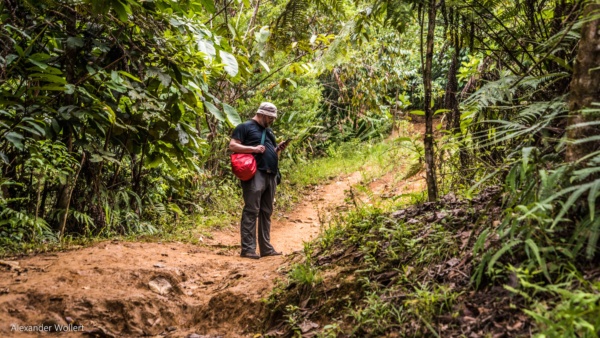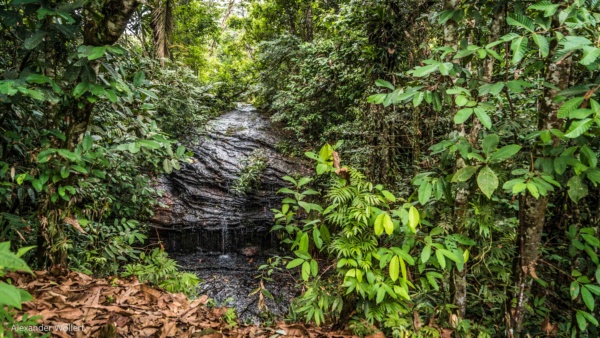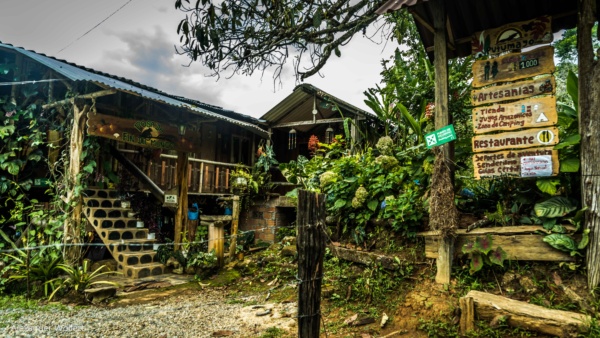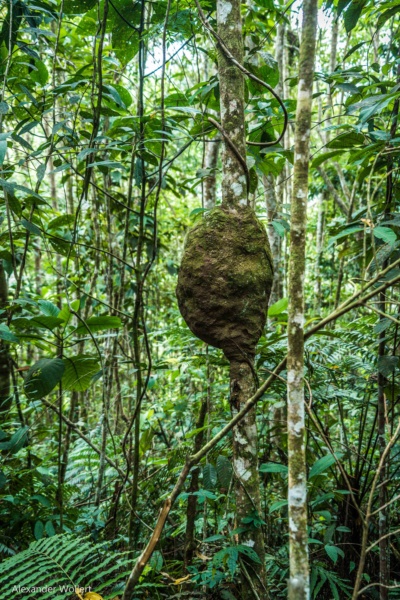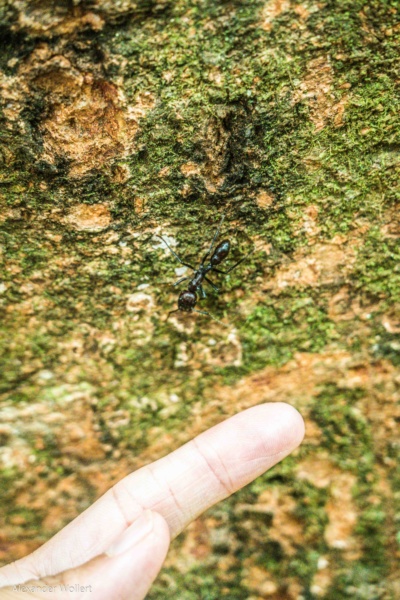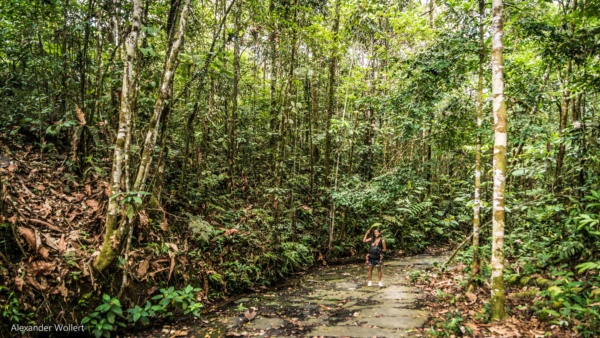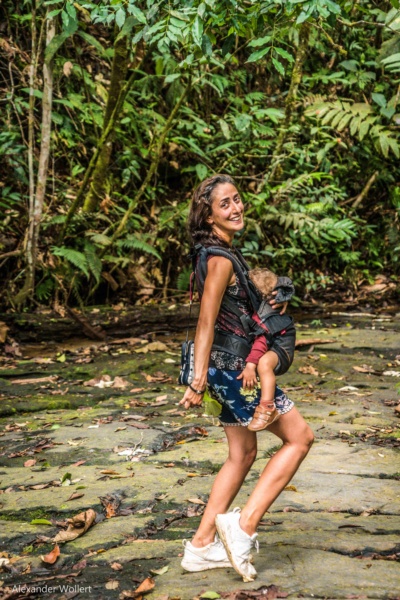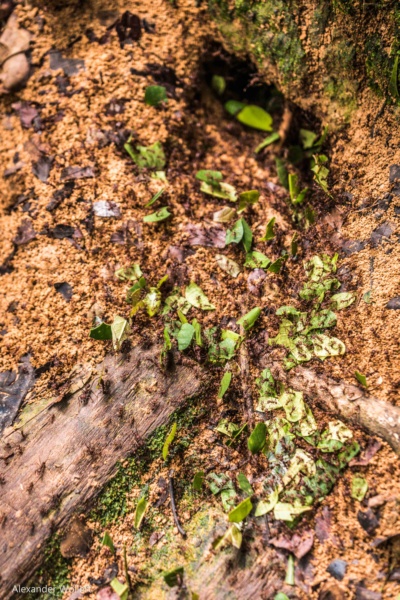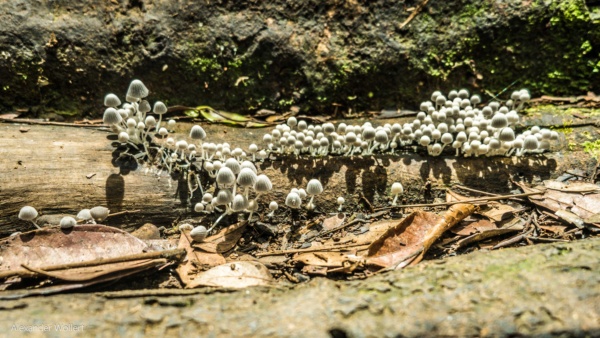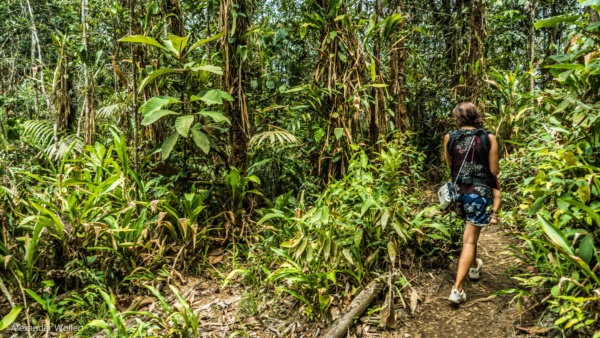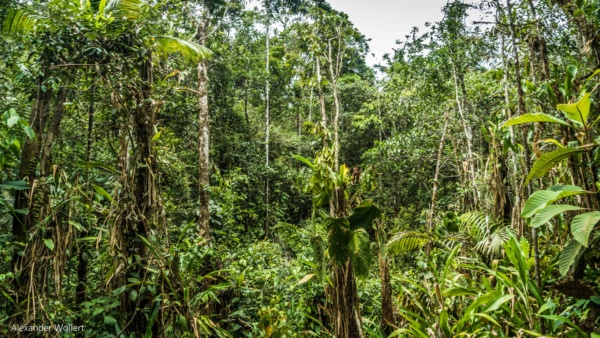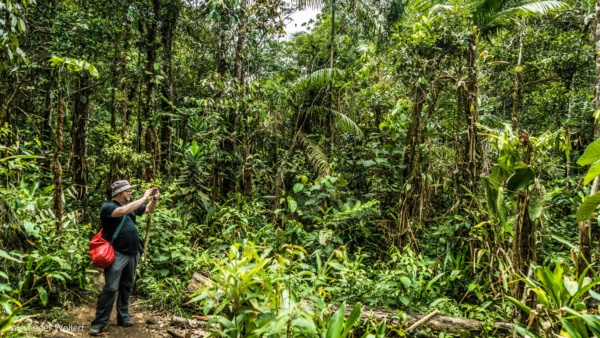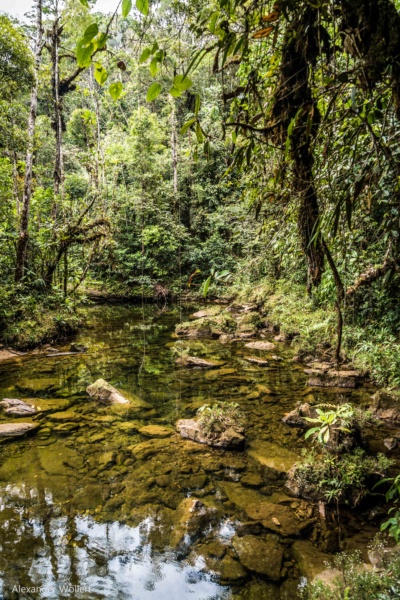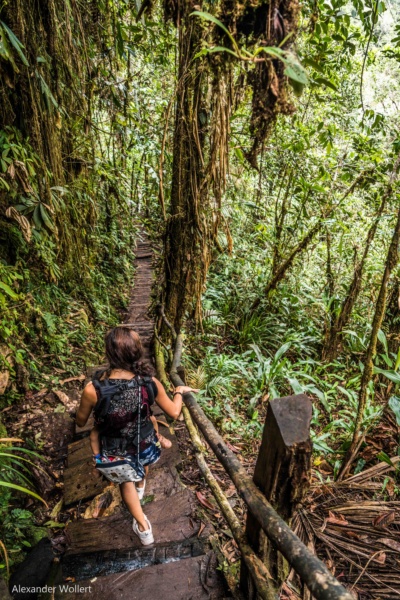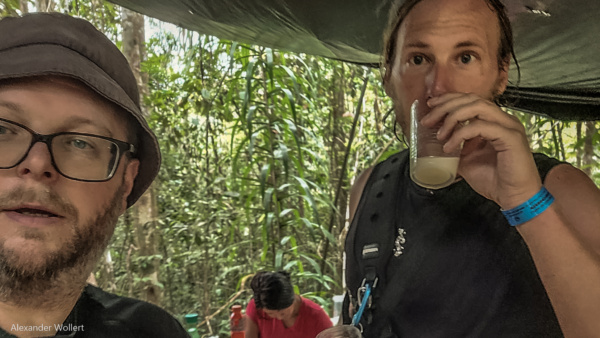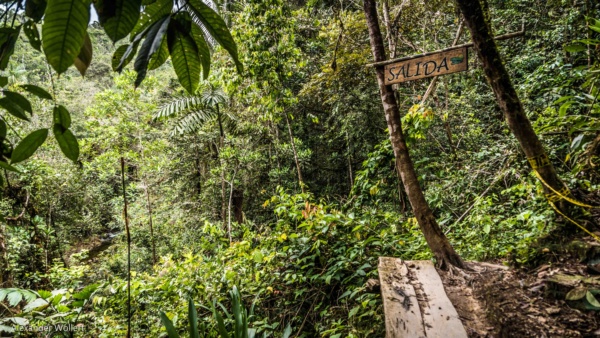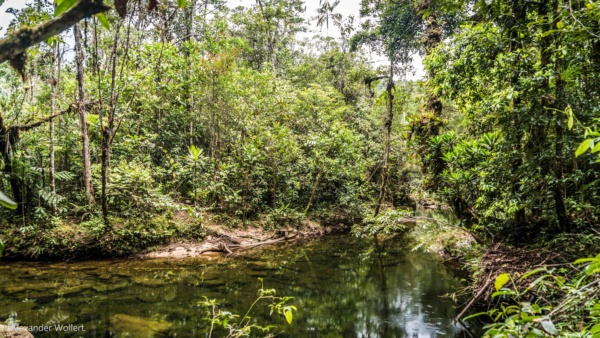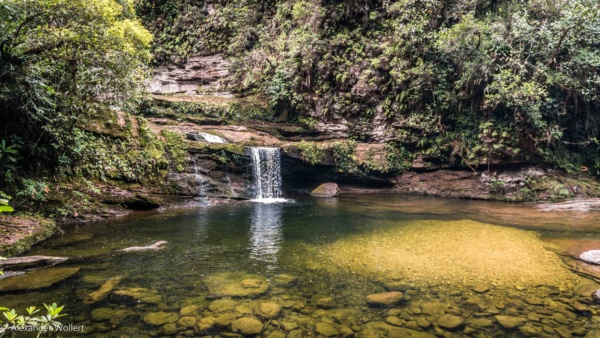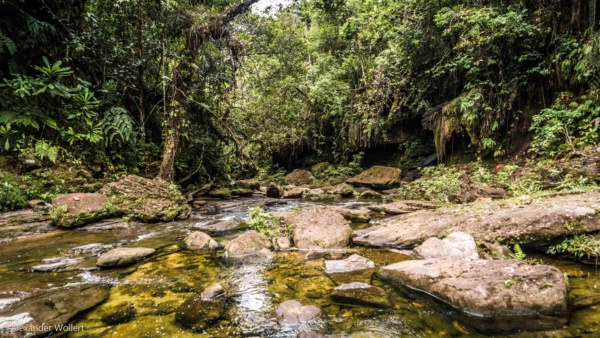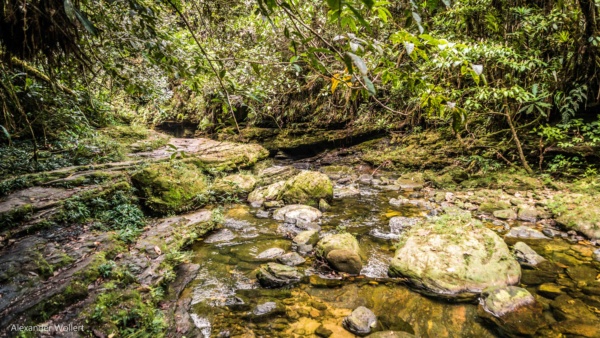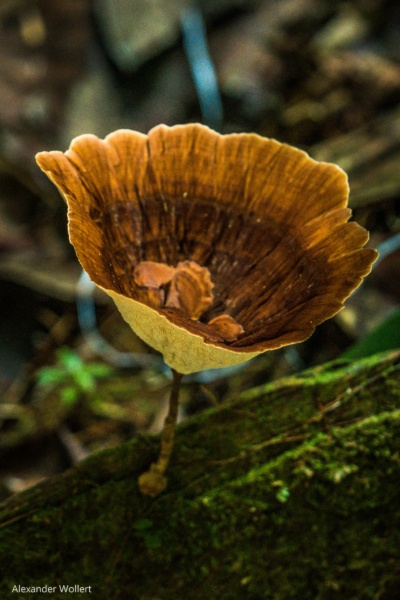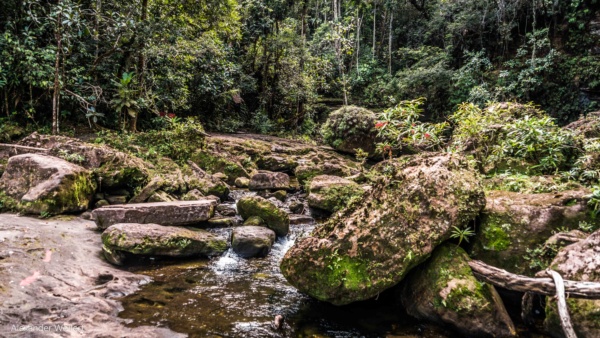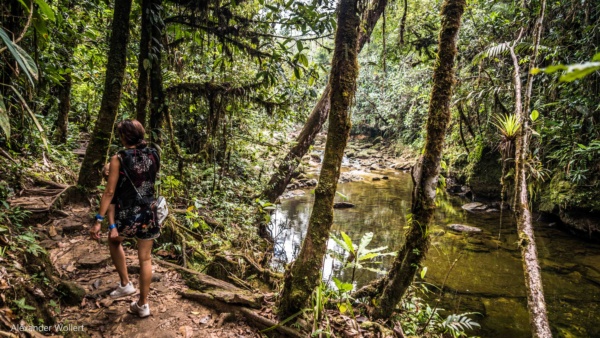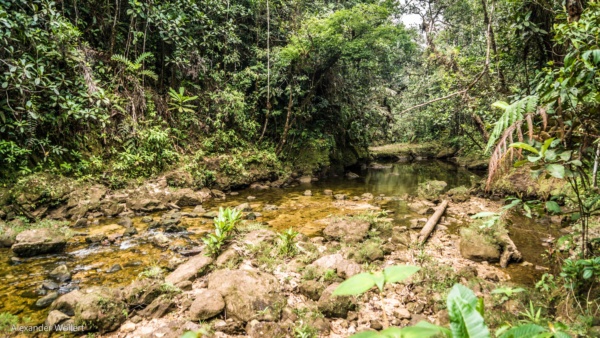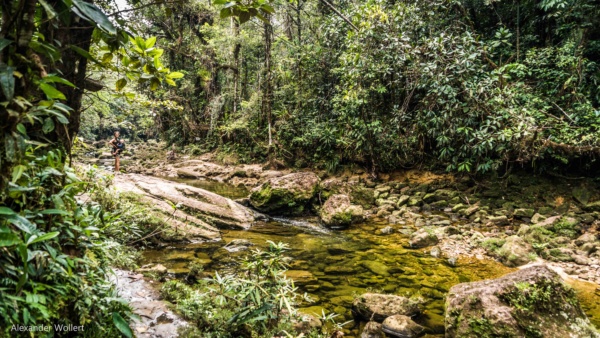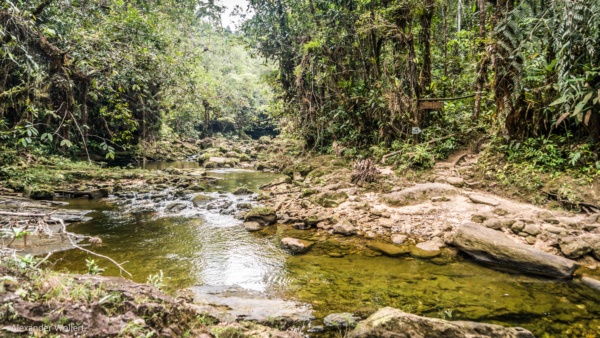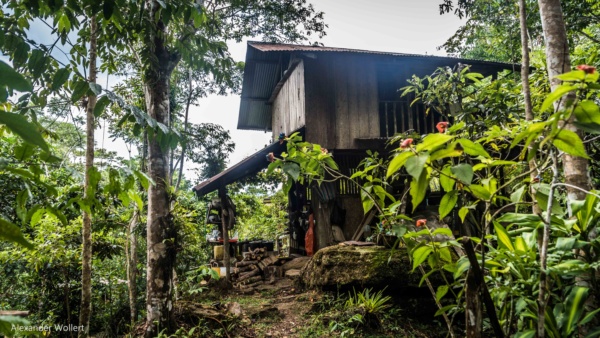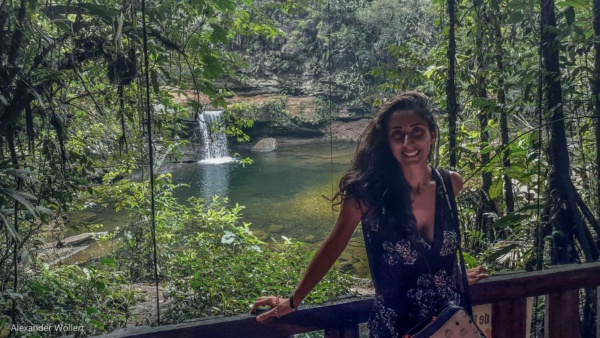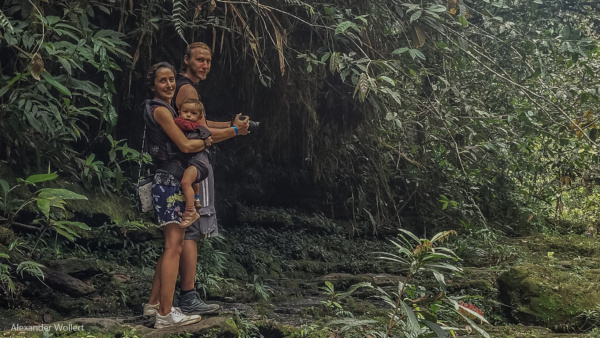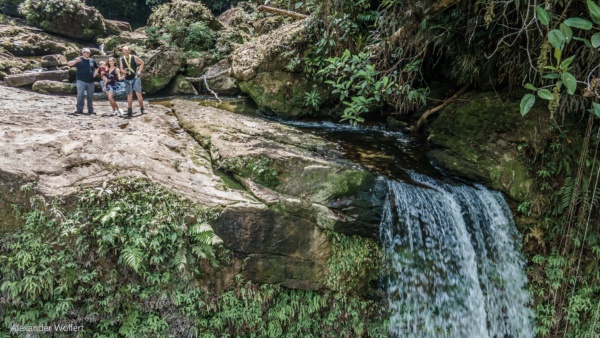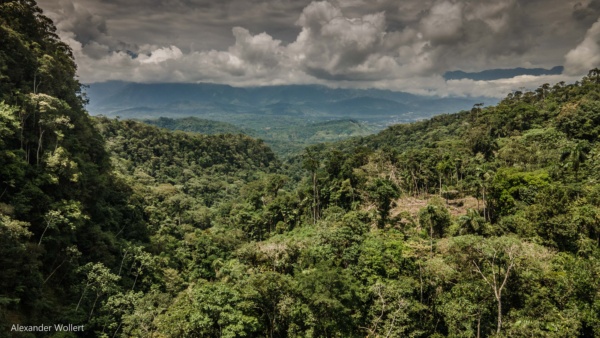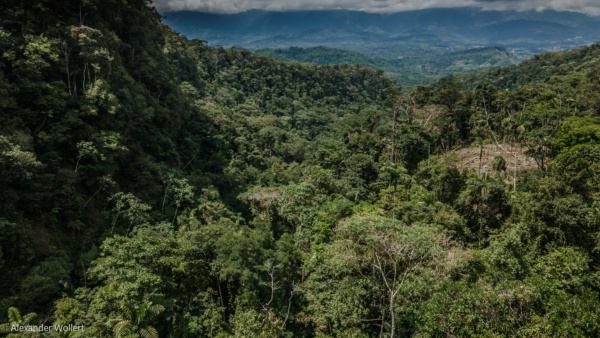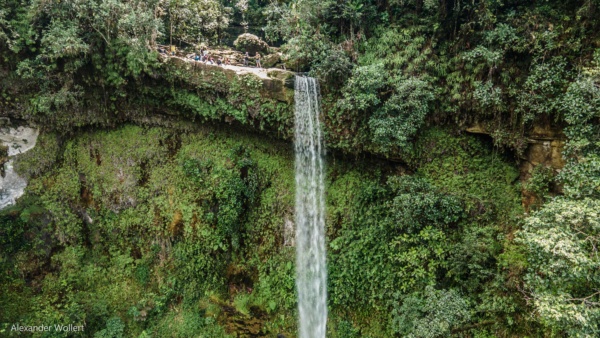Diary Entry
We cross the fascinating region of Putumayo in southern Colombia and after two days we come to a place where the end of the world is advertised. Not in the form of the Last Judgment, but as the edge of the earth.
There is said to be a waterfall nearby that falls vertically over a cliff. That sounds exciting. We’ll find a place to stay. We stay for two nights in the Ecolounge Dantayaco.
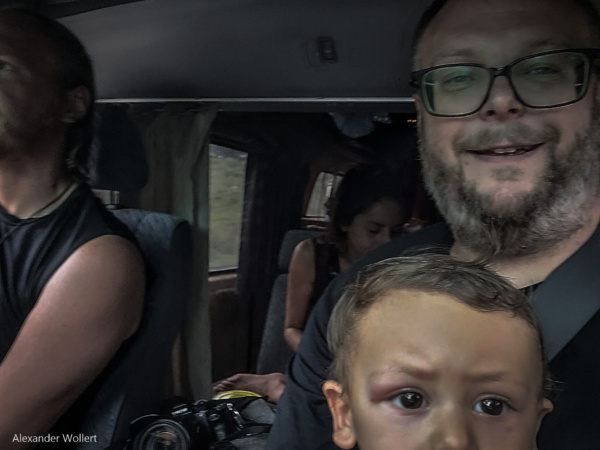
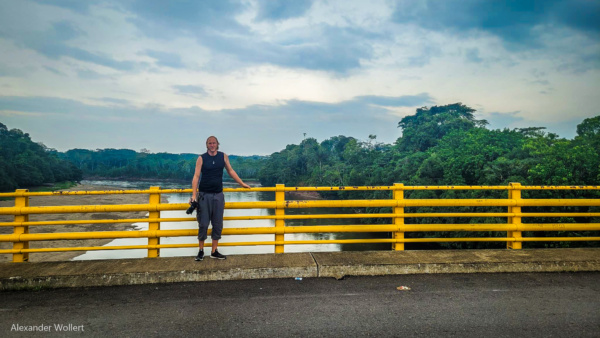
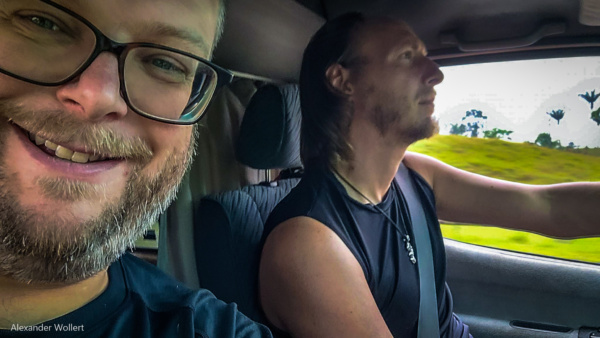
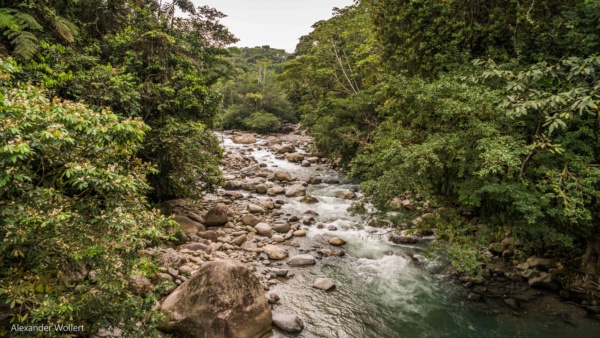
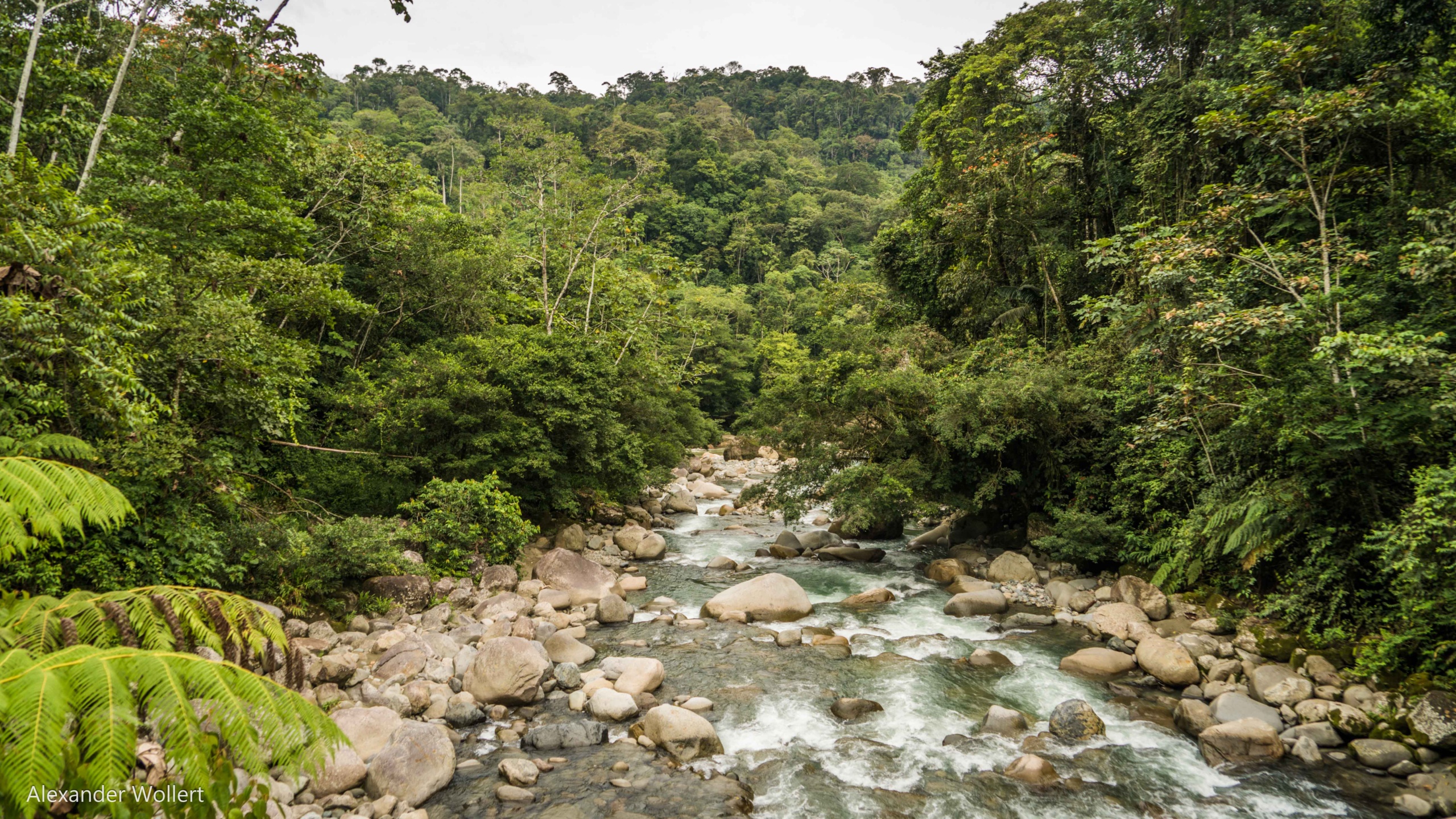
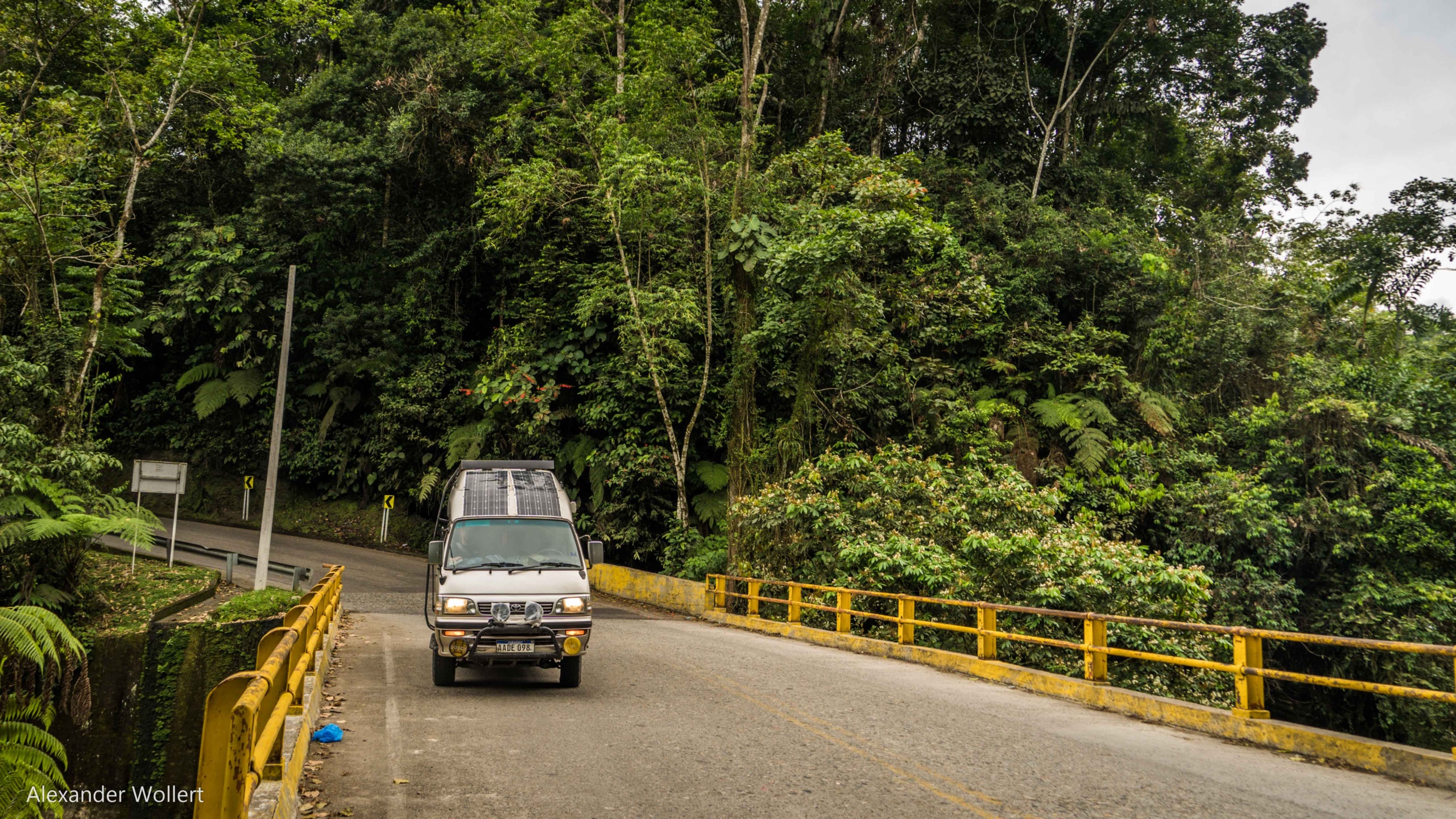
The hostel also has a large tropical garden. We find the flowers with the fragrant water, but we also get to know new trees, such as the pomegranate tree, which bears fruit the shape and size of cannonballs.
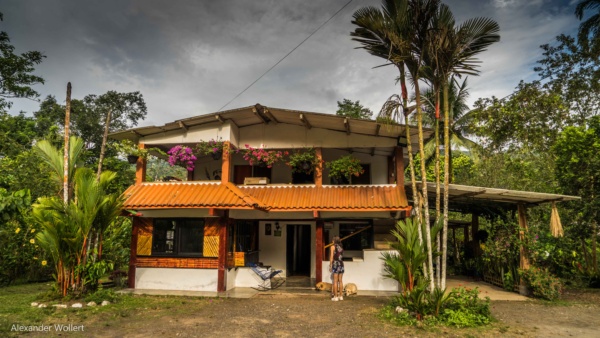
Unfortunately you can’t eat them. Bananas and jungle grapes, limes and coconut palms grow lush here. Cardamom, which is used to refine the cocoa here, grows in a bed of herbs.
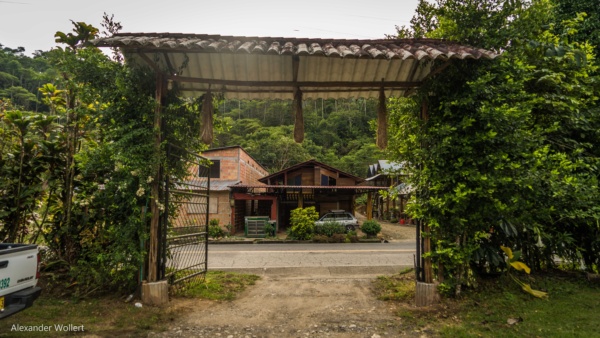
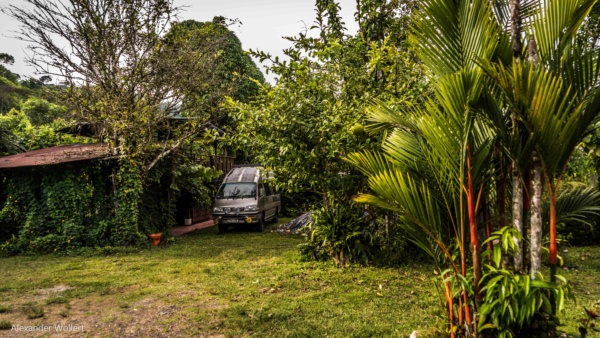
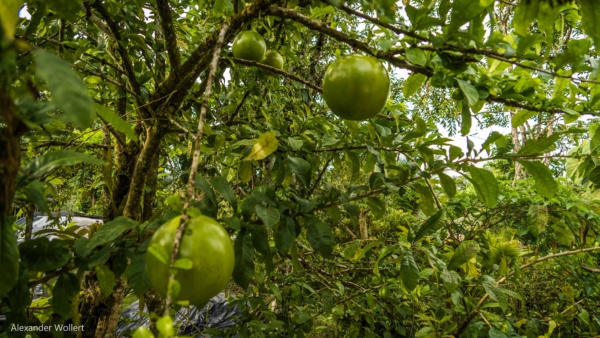
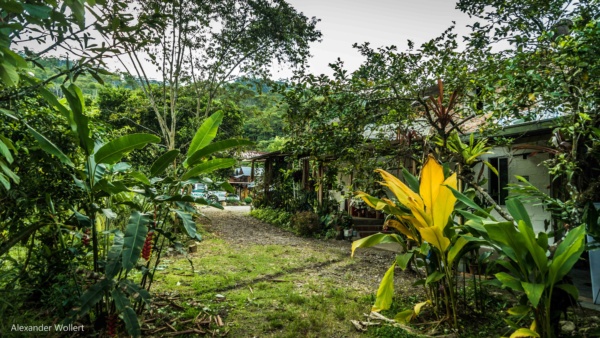
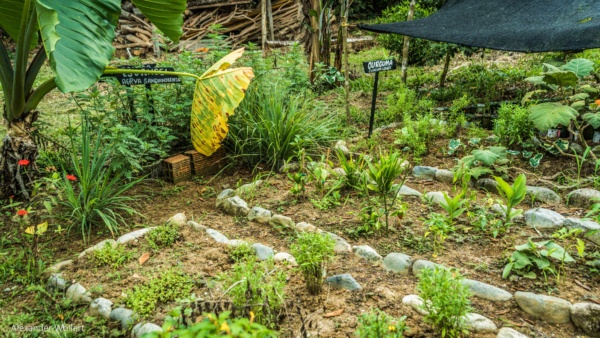
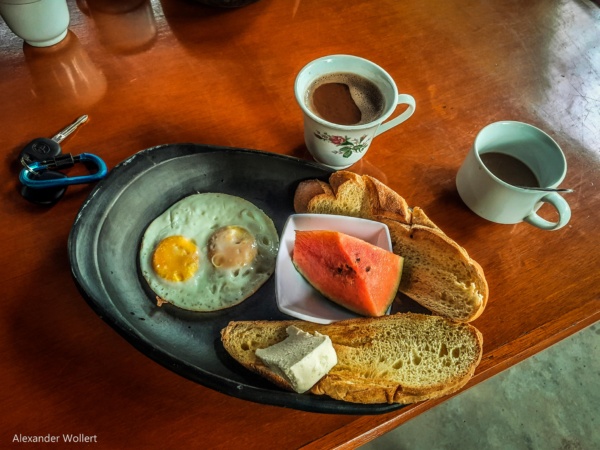
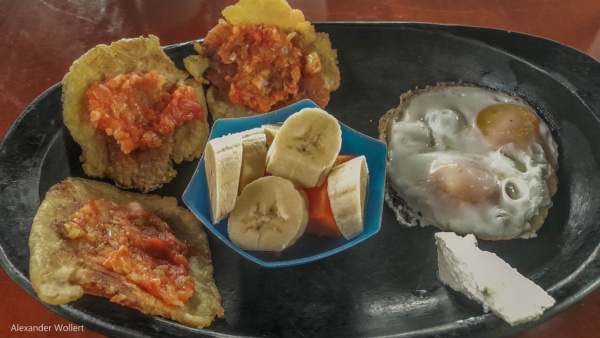
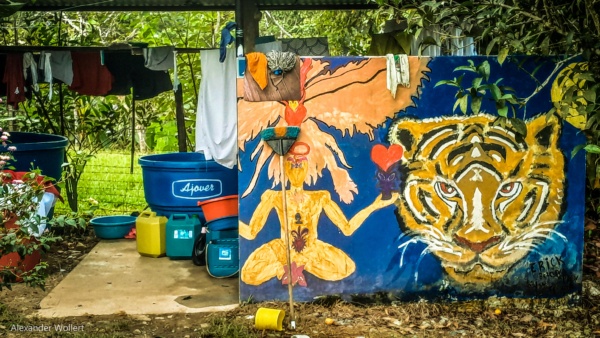

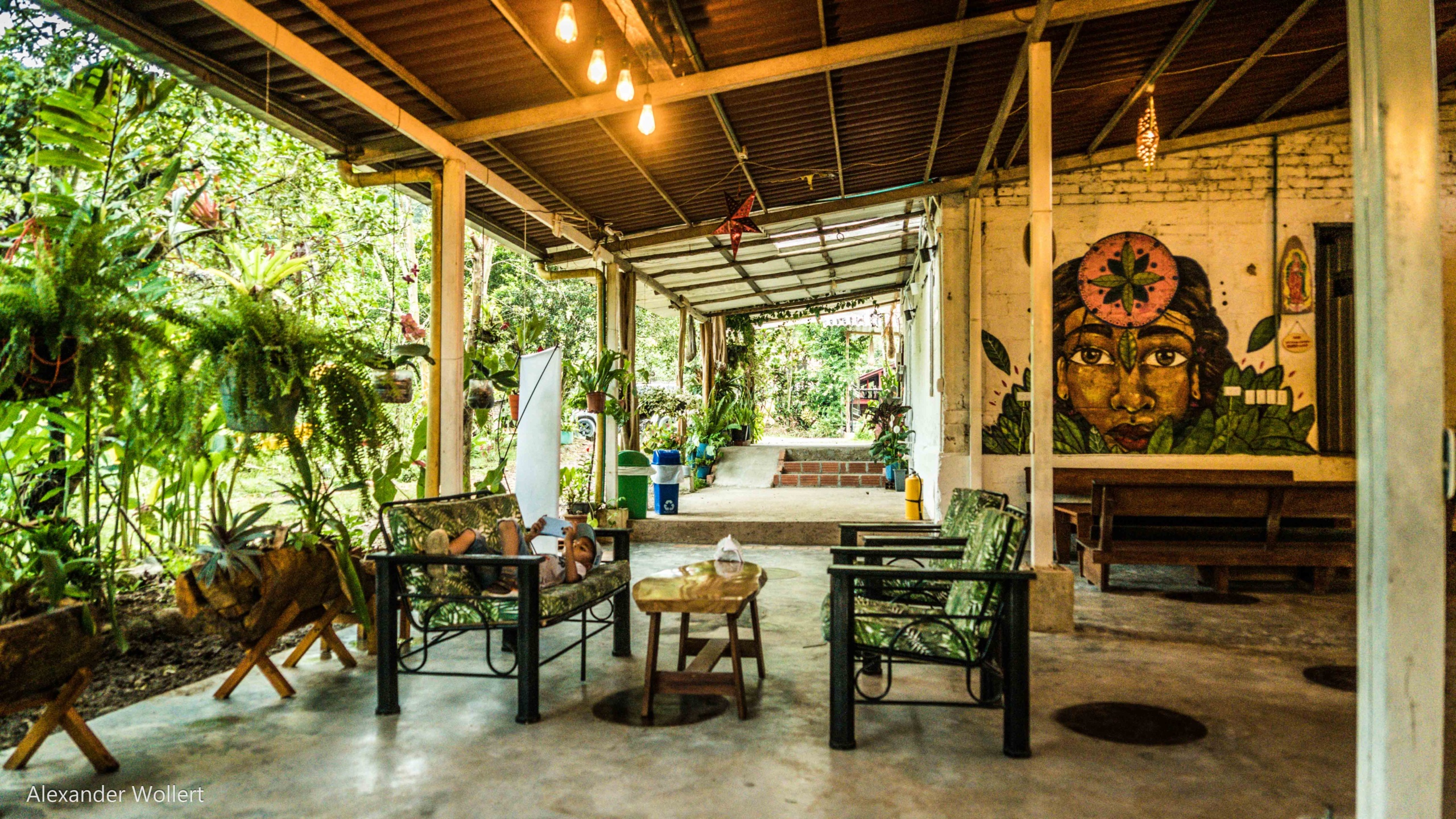
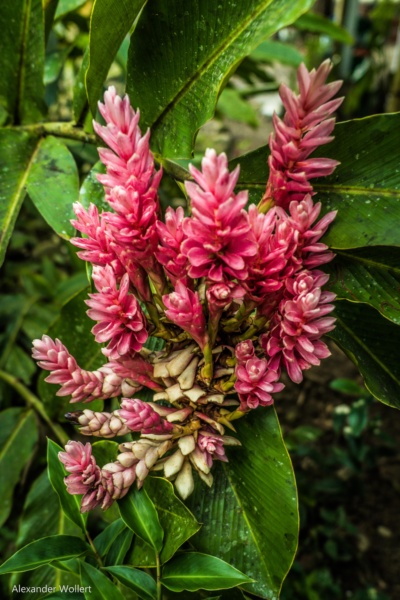

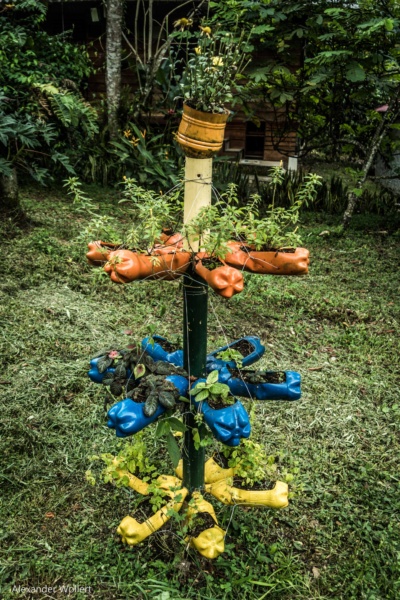
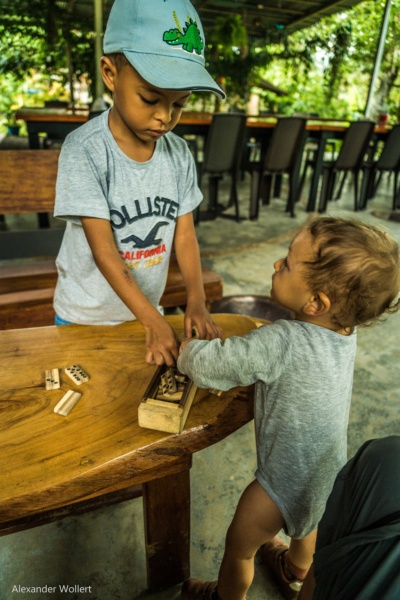
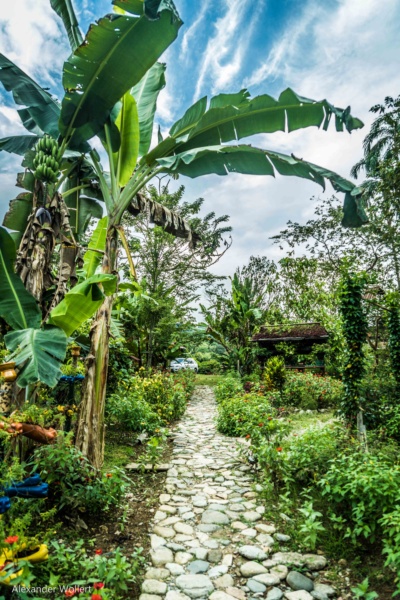

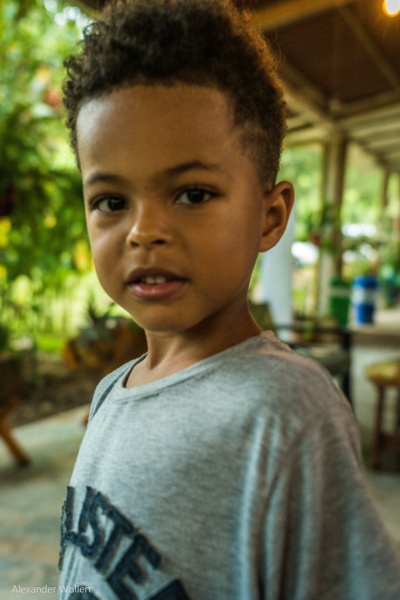
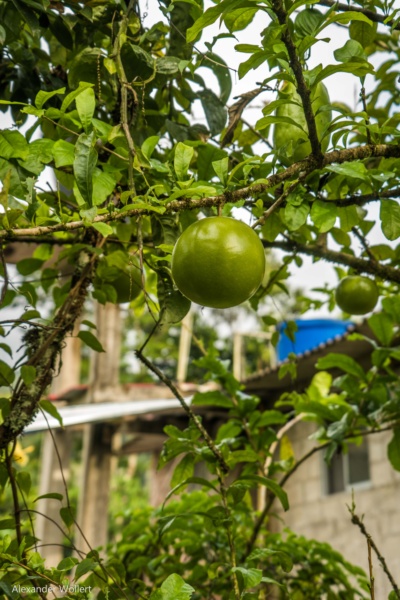
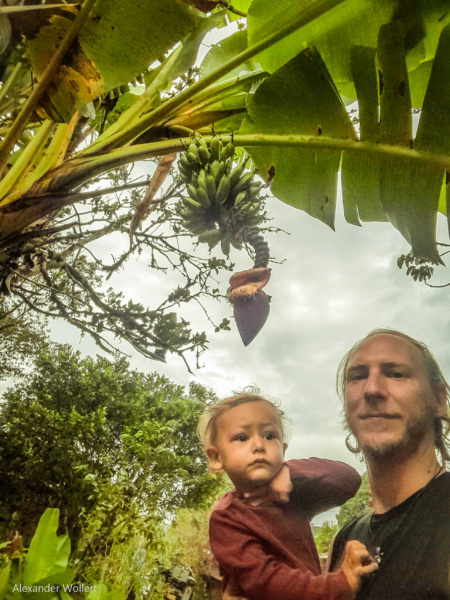
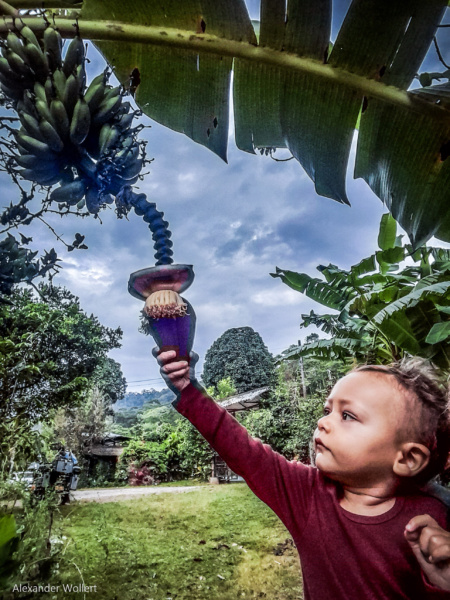
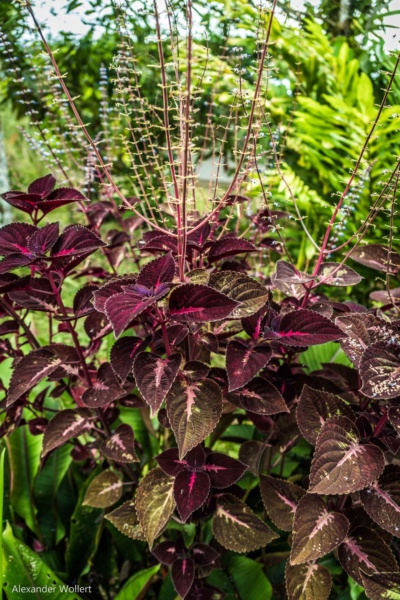
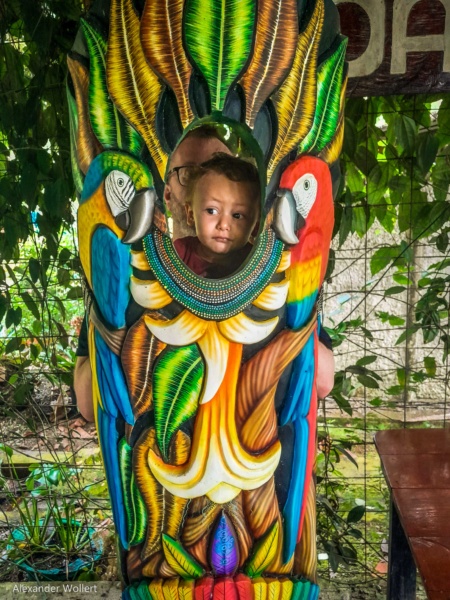
The next day we plan to walk to the end of the world. That’s the name of the high waterfall, to which a three-kilometer jungle path leads. On the way we cross a mountain river via a suspension bridge and climb three hundred meters. Luckily, a lady sells us chilled chicha on the way.
Along the way we’ll spot streets of leafcutter ants and termites, and follow a river to its high-altitude end at Fin del Mundo. There the water plunges into the depths and in front of us we see the panorama of the Colombian mountains.


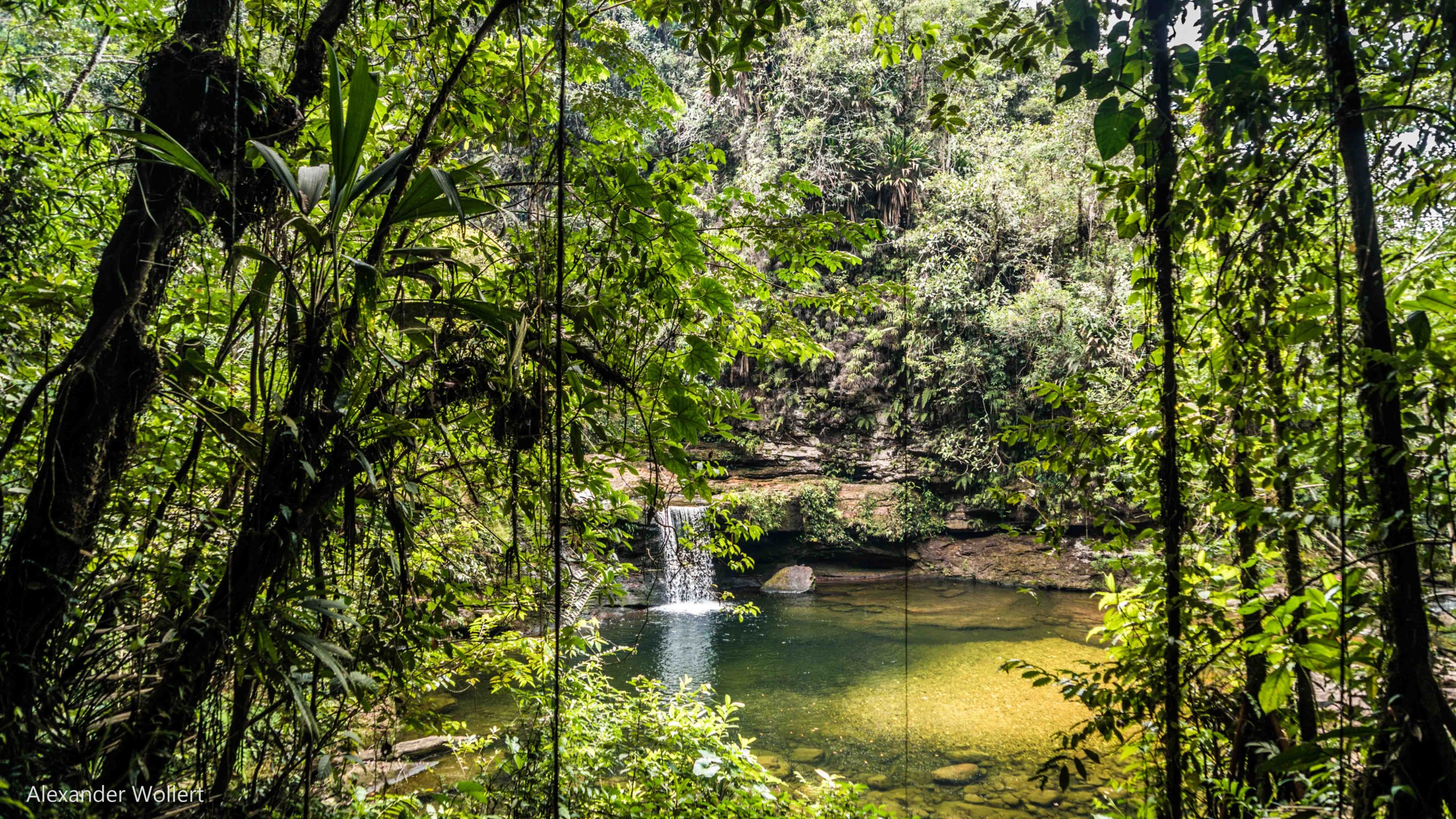
The waterfall plunges approximately 120 meters into a natural rock formation, forming a pool fed by crystal clear water. The water is cool and refreshing, inviting us to swim amidst the spectacular scenery.
I swim in one of the large natural lakes in front of the fall before we eat some tilapia and head back.
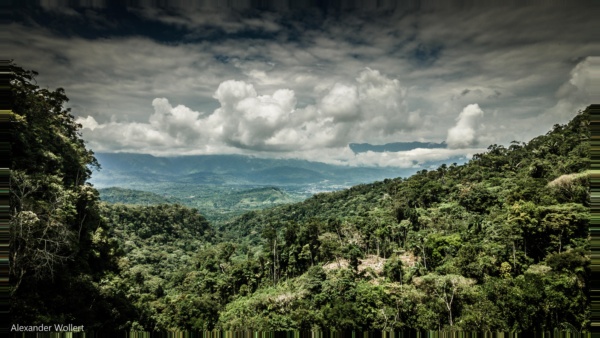
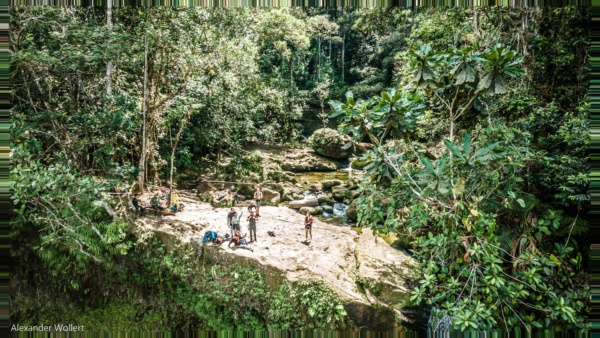
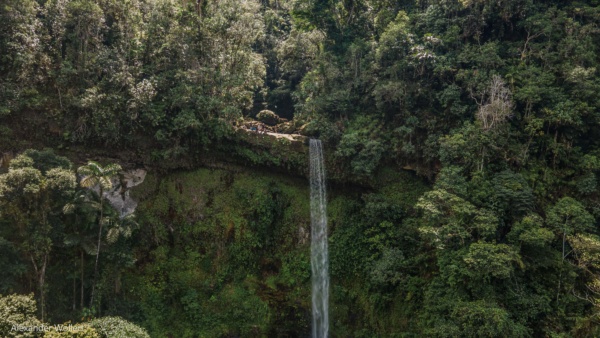
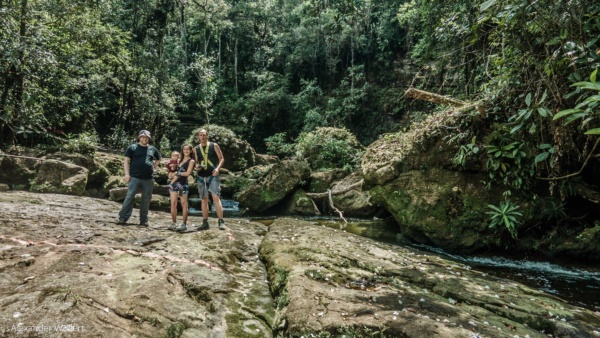
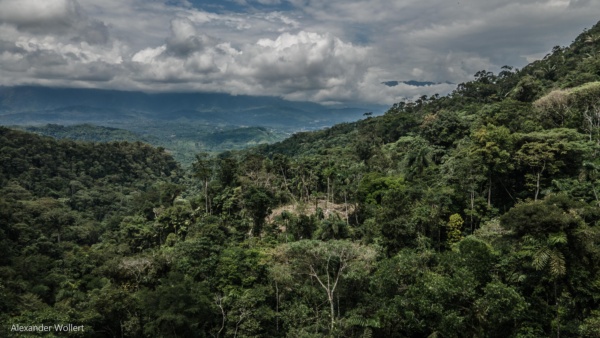

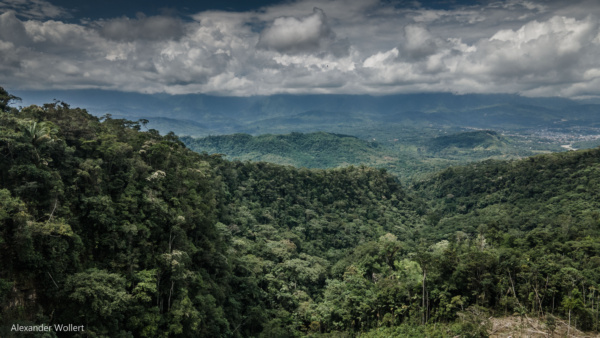

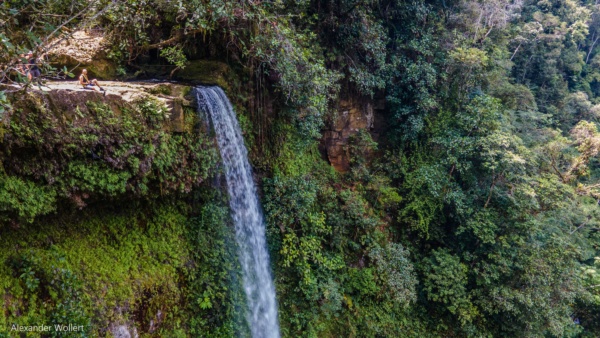
To our surprise we are the only ones who came for the remarkable waterfall. The other guests come to the Putumayo region for a special ritual called Ayahuasca. I’ve heard a lot about it in Peru and this area seems to be the place in Colombia where many shamans perform this ceremony, in which one is said to be able to cleanse one’s body and mind with the help of music and a potion made from various jungle plants.
Many foreigners are attracted to this ritual. We get to know Tibou, who is now performing the ceremony for the seventh time. Now all the graffiti in the Ecolounge makes sense to me. The symbols of nature, the jaguar and the shaman all allude to the ceremony and experiences during ayahuasca. From Wikipedia I learn the following:
Wikipedia: AyahuascaThe Ayahuasca phenomenon has been subject to globalization since the late 1990s. Some famous personalities, such as pop singer Sting in his biography and in television interviews, have spoken publicly about their personal and spiritual ayahuasca experiences. Western ayahuasca tourism developed, resulting in thriving “healing centers” in the upper Amazon region, mostly in Peru, mostly owned by Americans and paying or hiring local mestizo shamans on a fee basis. The offers are often aimed at the expectations of the western audience: a supposed authenticity of Indian-shamanic spirituality and wisdom. For the foreign audience, this often leads to an unrecognizable folkloric re-traditionalization that does not reflect the current reality of mestizo folk medicine.
Western neo-shamanistic and syncretic elements are mixed with mestizo animism and shamanism and East Asian snippets of Buddhism and yoga to meet the expectations of the western ethnotherapy audience.
However, the globalization of ayahuasca in the other direction can also be observed, so that nowadays more and more ayahuasca offers can be found in North America and Europe, partly by South American shamans who offer seminars and retreats there, partly by western neo-shamans, western alternative psychotherapists and ayahuasca churches or their globalized offshoots.[9]
Ayahuasca tourism and the Ayahuasca business are sometimes heavily criticized by ethnologists as cultural colonialism, since commercial marketing continues to destroy egalitarian social structures, unnoticed or ignored by the ethnologically mostly untrained Ayahuasca tourist. Competitive pressure and violence between and against tourist shamans is increasing behind the scenes of healing centers. Complex healing systems of Amazonian vegetarianism are reduced to the aspect of psychedelic-spiritual ethnodrug use. Ayahuasca is overgeneralized as a supposedly millennia-old healing method for almost everything.[10]
Let’s see if I try this ritual myself. It seems to be socially acceptable now.
We leave the end of the world and see what lies behind it. At first glance, a lot of mountains and mist.

